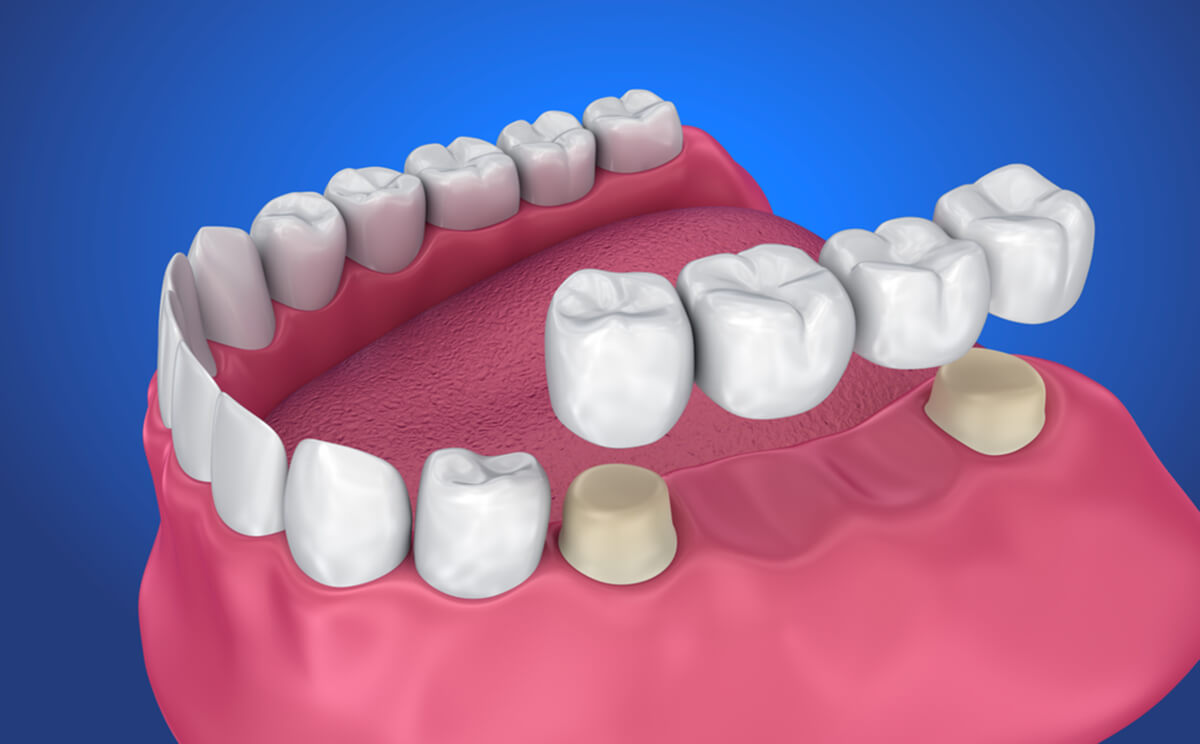A fixed device that helps replace missing teeth is a dental bridge. Dental bridges typically last decades without ever needing maintenance.
However, bridges may become loose or deteriorate; rot may enter beneath the bridge and harm neighboring teeth; or adjustments to the alignment of your teeth may have an impact on how the bridge fits in your mouth. When these things happen, removing the bridge might be essential. But can a dental bridge be taken out and refitted?
Everything is dependent on the stability of the bridge and any underlying issues. A dental bridge in Airdrie is defined here, along with the issues that might necessitate its removal and replacement.
What are Dental Bridges?
The adjacent teeth are impacted when you lose a tooth due to decay or other issues. An open area can cause surrounding teeth to tilt or drift out of position, which can impair your bite, hurt your teeth, or cause tooth damage. A dental bridge is a device that fills in the gap. Two or more crowns that are designed to fit on top of the anchoring teeth or abutment make up a dental bridge. A pontic, or fake tooth, is positioned in between these crowns to cover the space left by your missing tooth. The crowns are cemented over the neighboring, healthy teeth by the dentist in Airdrie.
By replacing a missing tooth and restoring your smile, a dental bridge has a substantial cosmetic impact in addition to restoring the functionality of your teeth.
Why are Dental Bridges Removed or Replaced?
Due to this, dental bridges are a very common and essential dental device. Despite the fact that bridges are a highly effective dental treatment option, there is always a chance of issues that require removing or replacing a bridge. These may consist of:
- A bridge that is poorly crafted or fitted may cause the good teeth underneath the crowns to develop dental rot. Healthy teeth are more vulnerable to decay because the dentist near you must file them down in order to put the crown on. Damage to the teeth and instability of the bridge might result from this deterioration of the anchoring teeth.
- Damage to the next teeth – Dental bridges occasionally develop rough spots over time. These rough surfaces have the potential to wear down healthy teeth’s natural tooth enamel if they come into contact with other teeth.
- An individual’s chance of developing gum disease might be raised by dental equipment like a dental bridge. Regular dental cleanings and brushing can both help lower this risk. Regular dental checkups enable your dentist to identify any early indications of gum disease and treat it effectively before it has a chance to do any long-term harm.
- Crowns or the pontic breaking – Pontics and crowns can be delicate even though they are designed to withstand the power of chewing. Eating hard items, such as hard candies, can cause the bridge’s surface to crack, fracture, chip, or even become entirely destroyed.
How Long Does a Dental Bridge Last?
Despite the fact that dental bridges are made to survive for many years, a variety of factors might cause them to fail. Your dental bridge might then need to be removed, repaired, or replaced by your dentist. Several typical reasons for bridge failure include:
- Neglecting dental hygiene is the main contributor to bridge failure. The stabilizing teeth may be harmed by the accumulation of decay under the crown and around it, leading to bridge failure.
- Poor Abutment Support – Modifications to the supporting teeth can make a dental bridge less stable. Uneven pressure distribution on the bridge might lead to failure if these teeth are unstable or provide less support.
- Bad Habits: When you’re anxious, do you frequently chew on pens? Have you ever gritted your teeth at night? Are hard candies and nuts your favorites? Any one of these behaviors could harm your bridge’s pontic or crown.
- Lack of Regular Dental Care – Regular trips to the dentist are just as important for maintaining the life of your bridge as practicing proper oral hygiene at home. Regular oral examinations can identify any potential bridge issues before they result in bridge failure.
Repairing and Replacing a Permanent Bridge
A dentist or prosthodontist’s competence is often required for repairing and replacing permanent dental bridges near you. The particular strategy will depend on the complexity and size of the problem.
A dental expert should be consulted for a thorough evaluation and tailored recommendations on whether to repair or replace a permanent bridge. They will assess your particular circumstance and offer the best course of action based on your requirements.
Consult Our Dentists!
As you can see, dental bridges offer a functional and aesthetically pleasing way to replace missing teeth. But they also need attention and frequent shifts in routine. Contact Airdrie Choice Dental right now to find out how we can help if you have any missing teeth or a dental bridge that is giving you trouble. It might be possible to carefully remove or repair an existing bridge while it’s still in place, or it might be time for a new bridge.

